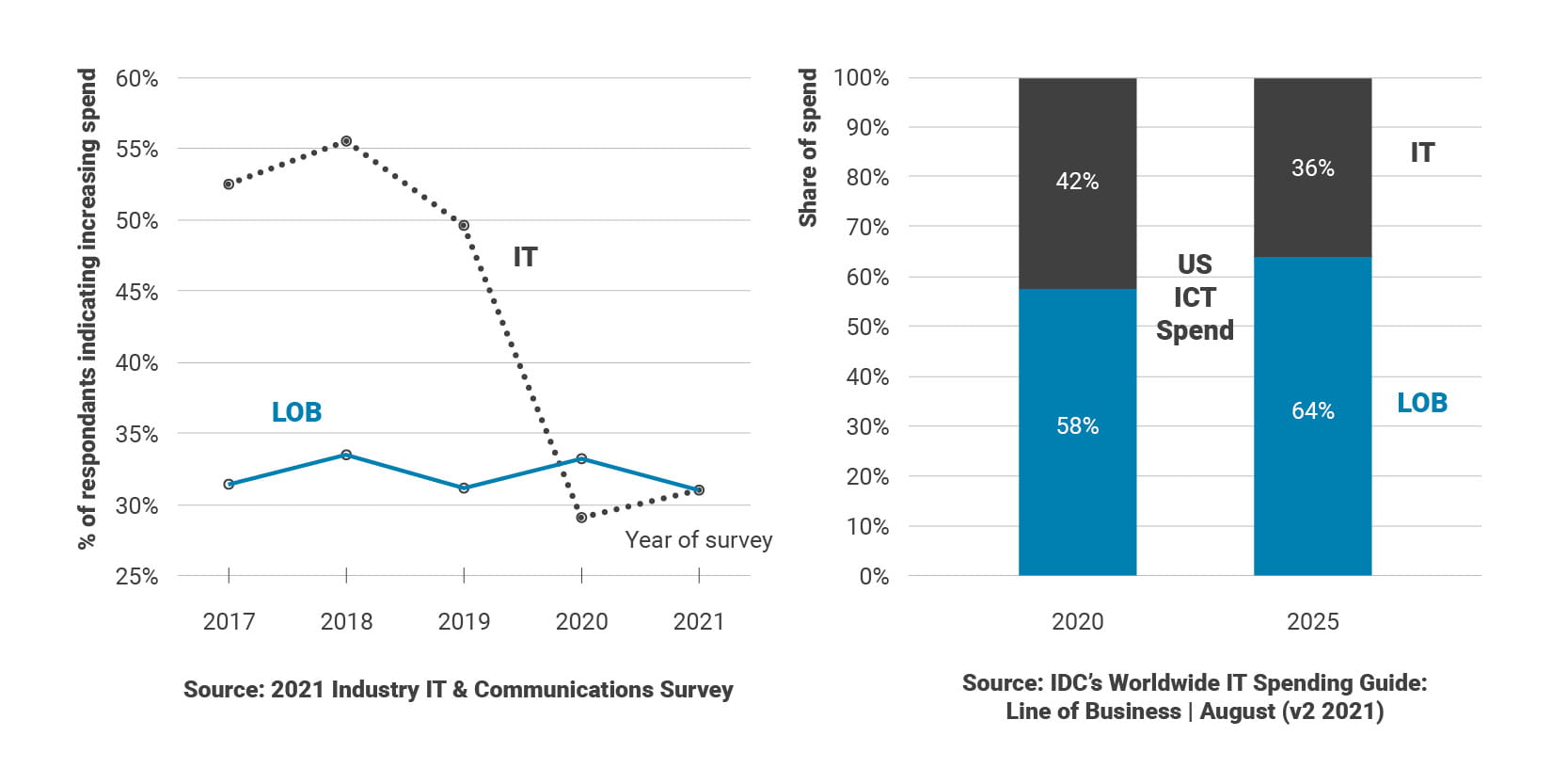Funding Transformation
- mars 23, 2022
Understanding budgetary finance for digital transformation
Every business is on a journey of self-improvement and rationalization. Companies leverage strengths to minimize weaknesses and look for opportunities to build, optimize and transform. You may have heard the expression that “Today, every company is a tech company.” However, modern software products want to encapsulate technology platforms and offer them as a service to focus on your core business functionality. At the forefront of modernization, there is a movement to abstract routine functionality from the enterprise technology stack, such as hosted infrastructure, web services, customer relationship management or database management. In fact, most applications or functionalities you can conceive likely have a related vendor that offers a managed service version of that capability delivered as a ‘XaaS’ product.
It can be easy to get overwhelmed with making the right choices to address needs that balance the adoption of modern technology, the evolution of the business and the continuity of operations. As Tomoko Yokoi said in Forbes recently, “Funding a digital program is both art and science.” According to several recent studies, calculating future business needs with technology capacity to build a modern workplace on top of your operational capabilities is no easy feat, especially when up to 87% of digital transformation programs fail to meet original expectations.
It's important to acknowledge two key differentiators that are driving perspectives on funding digital transformation and business modernization. Cost savings are only part of the picture, and IT-driven decisions are not the primary driver of budget considerations. Legacy technology can stifle business innovation, but it's important to understand how to quickly unlock value in measurable increments. It's becoming more evident that investments being made in developing technology advancements for medium and large businesses are stemming from a clear business imperative — whether improving CX, addressing new sales channels or broadening delivery capabilities. Looking at CAPEX and OPEX reduction for IT operations management is still relevant but not primary to the discussion of evolving an enterprise technology stack. Recent studies even suggest that technology spend from Line of Business (LOB) channels has greater inelasticity, especially during economic downturns, relative to classic technology spend stemming from IT Cost Centers.

It’s not surprising that decision authority over IT spend is shifting to business units as technology adoption and integration become more pivotal to the success of many lines of business. There are many prevailing tailwinds pushing organizations to adopt more progressive technology standards, but they usually start with a single business question: “How can we improve sales?”; “How can we drive broader product adoption?”; or “What should we invest in to enable future business expansion?”
Let us explore a few such use cases and how to integrate a business-driven decision pathway for your IT spend planning.
A multinational beverage company asks, “How can we improve customer analytics to improve retention and repeat business?”
- KPIs: operating margin, inventory turnover, fill rate, IT spend rate
- Potential avenues for digital transformation:
- Modernize the CRM platform and take advantage of a SaaS platform, such as Salesforce or SAP.
- Integrate backend databases with a data intelligence engine such as Snowflake to drive more customer insights.
- Prevailing factors and needs:
- Update Point-of-Sales (POS) architecture and potential IOT integration for full consumption of all field, remote and in-store sales and impressions
- Collect additional data at the POS to drive additional customer insights to update the corresponding business and sales processes
- Implement a just-in-time, intelligent supply chain to ensure service and delivery reliability
A national general merchandise retailer tells us, “Our customers desire a better user interface for a web/mobile online store.”
- KPIs: unique visitors, average session duration, conversion rate, interactions per visit and bounce rate
- Potential avenues for digital transformation:
- Modernize the UI/UX/CX without heavily re-architecting a performance backend.
- Prevailing factors and needs:
- Reduce costs of transitioning backend workforce while, at the same time, using some savings from a PaaS modernization provider to invest in upskilling and evaluating IT portfolio and long-term replacement planning
- Build new UX that incorporates increased elements of customer feedback and interaction
- Defer the cost and complexity of a large-scale data warehouse migration that requires, at a minimum, a multi-tier application architecture that can achieve an updated user interface (UI) without touching other system or infrastructure components.
A multinational banking and financial services institution tells us: “We need improved transaction processing to keep up with multi-channel operations.”
- KPIs: service utilization, transaction success rate, infrastructure uptime and transactions completed per second
- Potential avenues for digital transformation:
- Large-scale mainframe modernization, including the re-platforming of all major mainframe workloads to the cloud
- Remove vendor dependency and avoid end-of-service life concerns
- Prevailing factors and needs:
- Legacy mainframe operations cannot support ongoing transactional processing requirements, and the cost of expanding on-prem mainframe footprint is prohibitive from a licensing, staffing and ongoing operations perspective.
- Although it is a large-scale effort to deploy mainframe modernization, looking at the future of business in this sector, multi-channel operations spanning web, mobile, in-person and device/IoT are only going to expand
- As capacity and throughput increase, building scalable cloud capacity is necessary — and the only one feasible — as a long-term solution
Understanding the maturity of your enterprise across the domains that include data intelligence, infrastructure, applications and business-critical systems are the first steps to unlocking progress. Journeys can be unique and depend on the individual priorities of each organization, but the objectives are similar — maximize business innovation and minimize overhead expenditures. NTT DATA can help you find that balance with our portfolio rationalization capabilities that ultimately deliver business transformation with mitigated risk.
This post wraps up our three-part series on Application Modernization. Read more from the series:
And stay tuned to continue the conversation around #appmodernization #digitaltransformation and #businessinnovation.
Join the conversation or reach out to learn more.Subscribe to our blog




